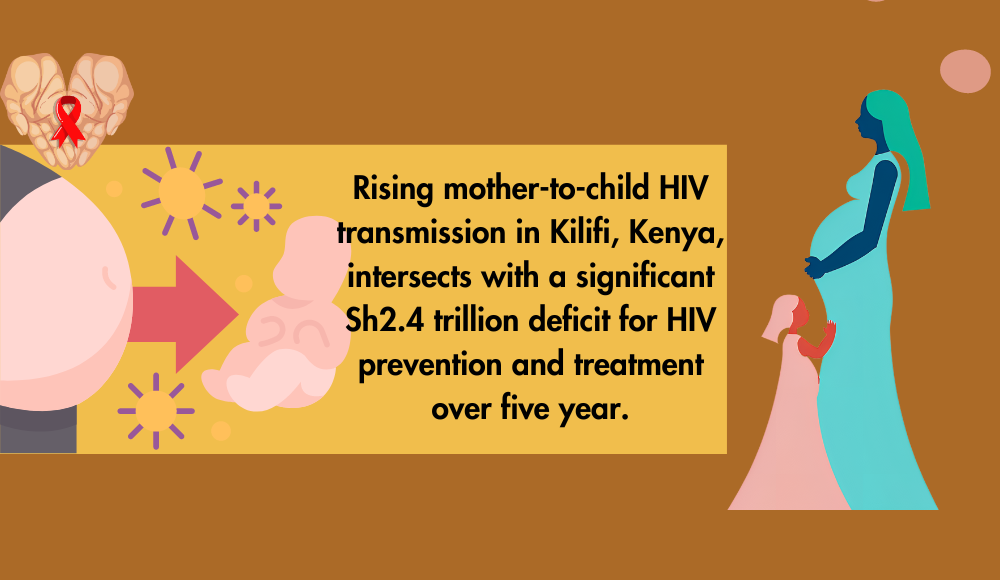
The rising cases of mother-to-child transmission (MTCT) of HIV in Kilifi County are a serious concern. Health workers report more and more children testing positive for HIV during routine checkups. Dr. Hassan Leli, the County Director of Health and Sanitation Services, says this increase is because pregnant and breastfeeding women are not taking their antiretroviral treatments (ART) as needed. Poor health services and lack of ART adherence are making the situation worse.
Kilifi’s situation is part of a bigger issue across Kenya. The country faces a Sh2.4 trillion (US$18 billion) deficit in its HIV response funding over the next five years. This funding gap, along with rising new HIV infections each year, threatens to undo the progress made in fighting HIV/AIDS. The increasing risk of MTCT, especially in areas like Kilifi, needs urgent action and a change in health priorities.
Despite significant progress, the lack of funding could lead to more babies being born with HIV. A recent report by Liverpool VCT Health highlights that international donors cover 66% of Kenya’s HIV prevention budget, while the Kenyan government only contributes 34%. This reliance on external funding is unsustainable and puts essential programs at risk.
In 2001, African leaders promised to allocate 15% of their national budgets to health during the Abuja Declaration. Kenya has yet to meet this goal, currently dedicating only 11% of its budget to health. Margaret Lubaale of the Health NGOs Network (HENNET) warns that without more funding, Kenya risks losing its progress in HIV prevention.
Effective MTCT prevention relies on ART for pregnant women, safe childbirth practices, and safe infant feeding. Without enough funding, these programs may face cutbacks, leading to more babies being born with HIV. This is not just a possible risk , this could soon become a reality if the funding crisis is not resolved.
The situation in Kilifi shows this urgency. Dr. Leli points out that children exposed to HIV but not infected have a 70% risk of dying within their first two years. Kilifi’s health statistics are alarming: with an MTCT rate of 11.2% and 506 related deaths, the county’s challenges reflect those faced nationwide. In 2022, Kilifi had 32,355 adults and 2,180 children living with HIV, with a prevalence rate of 3.4%. Despite treatment efforts, only 61% of those receiving treatment are virally suppressed.
The World Health Organization (WHO) estimates that globally, 1.3 million women and girls living with HIV become pregnant each year. Without intervention, the rate of MTCT during pregnancy, labor, delivery, or breastfeeding ranges from 15% to 45%. Kenya’s struggle against MTCT is part of this larger global challenge.
The Sh2.4 trillion funding gap is a major challenge, but it also offers Kenya a chance to show leadership and commitment. By prioritizing and funding HIV prevention, especially MTCT programs, Kenya can fulfill its promise to the Abuja Declaration and secure a healthier future for all its citizens.

Leave a Reply